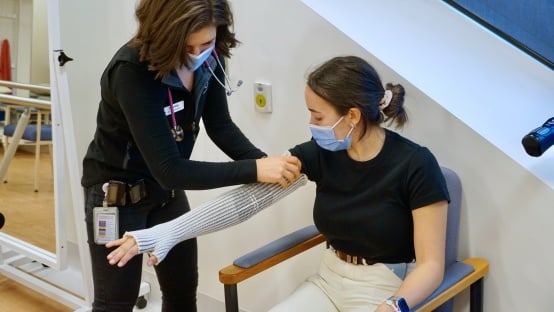General News
2 min read
17 March 2022
Lymphoedema is the chronic swelling of a body part. Fluid and protein accumulation in the tissue spaces causes it
Peter Mac is a leader in supporting patients with cancer who develop lymphoedema. During Lymphoedema Awareness Month this March we highlight how Peter Mac’s lymphoedema therapists and physiotherapists can help patients to reduce risk factors and to manage the condition. Lymphoedema refers to the chronic swelling of a body part which is caused by the accumulation of fluid and protein in the tissue spaces. “Lymph nodes act like a drain in your sink – if the drain is clogged, the fluid cannot drain,” explains Physiotherapist and lymphoedema therapist Megan Howard. “This usually happens in the arms or legs, but can happen in other parts of the body due to a disruption in the lymphatic system.” Some cancer treatments can cause lymphoedema; this is called secondary lymphoedema and can occur any time following treatment, but is most commonly seen within the first two years after treatment, due to: For more information about lymphoedema, speak with your treating team at Peter Mac or refer to one of the helpful resources below.

What is Lymphoedema?
Tips for preventing lymphoedema
